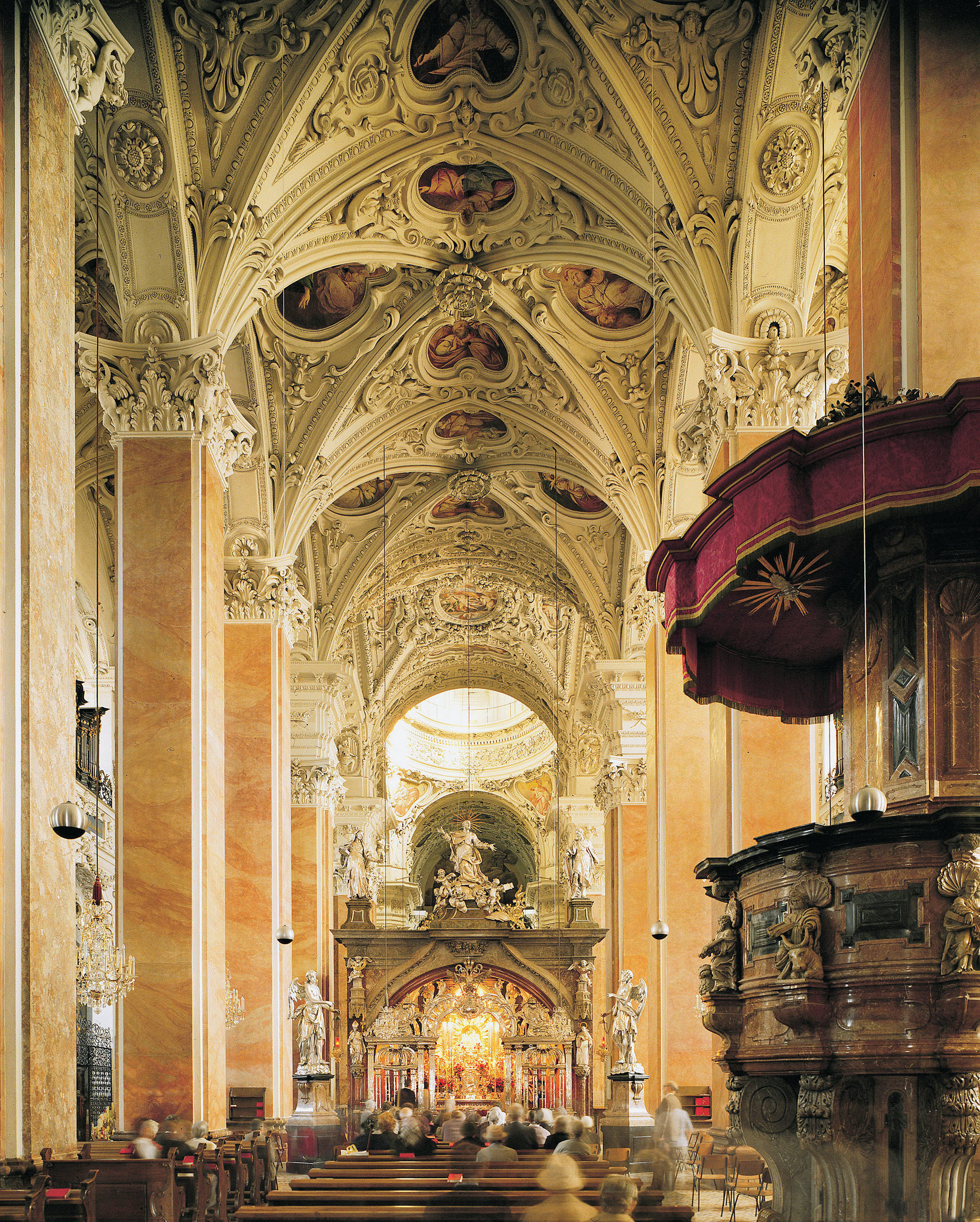Visual Source 15.1: Pieter Seanredam, Interior of a Dutch Reformed Church and Visual Source 15.2: Catholic Baroque: Interior of Pilgrimage Church, Mariazell, Austria
Some of the differences between Protestant and Catholic Christianity become apparent in the interiors of their churches. To Martin Luther, the founder of Protestant Christianity, elaborate church interiors, with their many sculptures and paintings, represented a spiritual danger, for he feared that the wealthy few who endowed such images would come to believe that they were buying their way into heaven rather than relying on God’s grace. “It would be better,” he wrote, “if we gave less to the churches and altars, . . . and more to the needy.”36 John Calvin, the prominent French-born Protestant theologian, went even further, declaring that “God forbade . . . the making of any images representing him.”37
Behind such statements lay different understandings of the church building. While Roman Catholics generally saw a church as a temple or “house of God,” sacred because it is where God dwells on earth, Protestants viewed churches more as meetinghouses, gathering places for a congregation. They were not sacred in themselves as places, but only on account of the worship that occurred within them.38 Furthermore, to Protestants, images of the saints were an invitation to idolatry. Acting on such ideas, Protestants in various places stripped older churches of the offending images, decapitated statues, and sometimes ritually burned statues and paintings at the stake. The new churches they created were often quite different from their Catholic counterparts. Visual Source 15.1, a painting by Dutch artist Pieter Saenredam from about 1645, portrays the interior of a typical Dutch Reformed (Protestant) Church.

Roman Catholic response to the Reformation took shape in the Catholic or Counter-Reformation (see Western Christendom Fragmented: The Protestant Reformation). That vigorous movement found expression in a style of church architecture known as Baroque, which emerged powerfully in Catholic Europe as well as in the Spanish and Portuguese colonies of Latin America during the seventeenth and eighteenth centuries. The interiors of such churches were ornately adorned with paintings, ceiling frescoes, and statues, depicting Jesus on the cross, the Virgin and child, numerous saints, and biblical stories. The exuberant art of these church interiors appealed to the senses, seeking to provoke an emotional response of mystery, awe, and grandeur while kindling the faith of the worshippers and binding them firmly to the Catholic Church in the face of Protestant competition. Visual Source 15.2 is a photograph of the interior of the Pilgrimage Church of Mariazell, located in present-day Austria. A church site since the twelfth century, the building was enlarged and refurbished in Baroque style in the seventeenth century.

Question
What obvious differences do you notice between these two church interiors? What kind of emotional responses would each of them have evoked?
Question
In what ways do these church interiors reflect differences between Protestant and Catholic theology? (See Snapshot: Catholic/Protestant Differences in the Sixteenth Century.) Why does the Protestant congregation face toward the pulpit, from which the minister presents his sermon, while the Catholic worshippers look toward the altar, where Holy Communion takes place?
Question
How might Protestants and Catholics have reacted upon entering each other’s churches?
Question
Keep in mind that Visual Source 15.1 is a painting. Why do you think the artist showed the people disproportionately small?